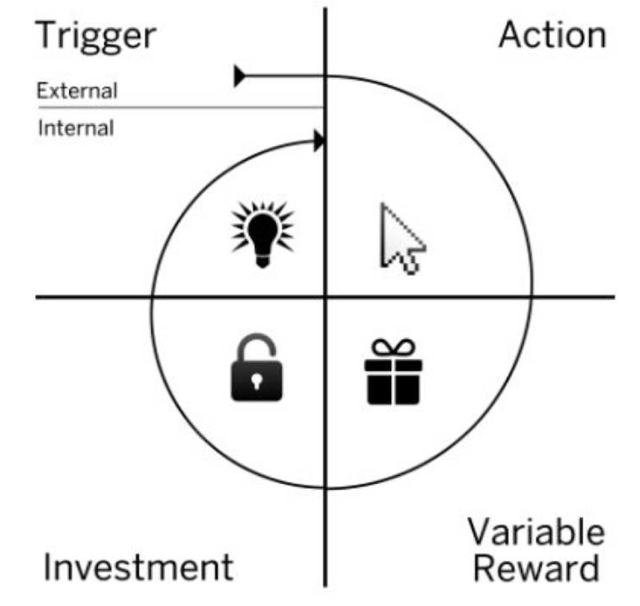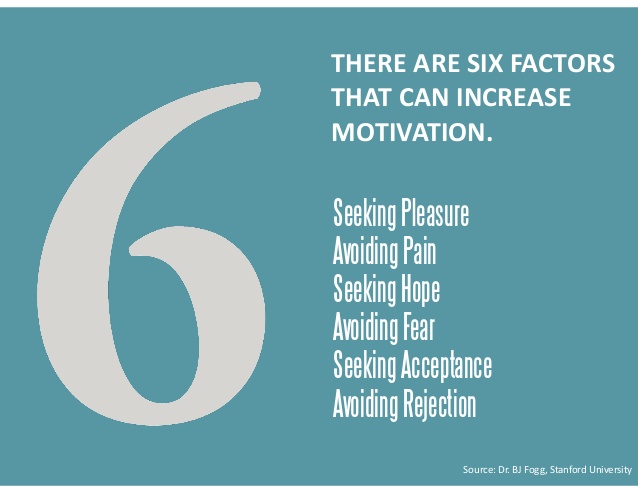- All Posts
- /
- The Hooked Model: The 4 Phases of Emails That “Hook” Readers

The Hooked Model: The 4 Phases of Emails That “Hook” Readers
Messaging and Automation-
 Alexis Rodrigo
Alexis Rodrigo
-
Updated:Posted:
On this page
Wouldn’t it be great if your subscribers were hooked on your emails? If they opened and read your emails without thinking about it? What would that do for your open and click-through rates? And what would that do to your bottom line?
Yes, it would it be wonderful and according to Nir Eyal, author of Hooked: How To Build Habit-Forming Products, it’s totally possible. The key, Eyal says, is to develop in your subscribers the habit of consuming your emails.
Eyal defines a habit as “things we do with little or no conscious thought.” And he describes a four-phase process for developing a habit around your product, which in this case would be your marketing emails. Interestingly enough, Eyal calls email “the mother of all habit-forming technology.”
Checking emails has become a habit we do several times a day. Some people do it within a few minutes of waking up in the morning before they even get out of bed. Think about your own relationship with email. Are there marketing emails you actually look forward to receiving? Are there particular people or companies whose emails you read — no matter what the subject line?
If so, then you’ve probably made a habit of reading their emails.
Below, we’ll look at why emails are habit-forming, and how you can get your subscribers hooked on your emails.
The 4 Phases of Emails That ‘Hook’ Readers
1. Trigger
The habit-creation process begins with a trigger. This is anything that sets behavior in motion. Triggers can be external, such as a new email notification banner or ping.
The trigger could be internal, like feeling bored or wanting to feel important by seeing a long list of new emails in your inbox.
Emails provide both external and internal triggers. Seeing your name and email subject line in your subscriber’s inbox are external triggers. Your subscriber’s motivations for reading your emails — whether it’s boredom, curiosity, or some other driver — are internal triggers. Eyal explains:
When a product is able to become tightly coupled with a thought, an emotion, or a pre-existing habit, it creates an “internal trigger.” Unlike external triggers, which are sensory stimuli, like a phone ringing or an ad online telling us to “click here now!,” you can’t see, touch, or hear an internal trigger. Internal triggers manifest automatically in the mind and creating them is the brass ring of consumer technology.
Your job is to discover what motivates your subscribers to read your emails. What are their internal triggers? Use those purposefully to write even more effective subject lines (external trigger) that connect with your readers’ internal triggers as well.

2. Action
The second phase of habit creation is “action,” or carrying out a specific behavior in expectation of a reward.
In the case of email marketing, you want your subscribers to perform a series of actions: open your email, read or scan through it, and click on a link. Maybe you want them to forward the email to friends as well.
Consuming your emails will become a habit only if subscribers expect and get rewarded after performing each of these actions.

So the next phase in creating a habit is…
3. Variable Reward
Eyal identifies three types of rewards: rewards of the tribe, the hunt, and the self.
Rewards of the tribe are those that make us “feel accepted, attractive, important, and included.”
One way to give subscribers rewards of the tribe is to give them a special name. This makes them feel like they’re part of an exclusive club. They’ll look forward to your emails and read them almost without thinking, because they’re reminders that they belong somewhere.
Another reward of the tribe is to connect subscribers with different people in your company. For example, if your emails are always signed by your marketing director, why not send one from the CEO? Or another from an employee who has some interesting and useful content for your readers?
Behind-the-scenes access to your business and receiving information ahead of the general public are other examples of rewards of the tribe.
Rewards of the hunt are goods, products, services, information, or other resources we need to survive or to get through our daily lives.
Examples of rewards of the hunt are subscriber-only giveaways. For example, ship some cool swag to the first 50 subscribers who click on your link or reply to your email with their snail mail address.
Or occasionally give your subscribers ebooks, webinars, checklists, recordings, and other useful stuff for free. Make sure only subscribers have this privilege.
Rewards of the self are feelings of competency, mastery, achievement, and accomplishment.
Subscribers get a reward of the self when they’re able to empty their email inbox. Or are able to respond to every email that requires it.
You can reward subscribers with the same sense of accomplishment by grouping a series of emails into an e-course, for example. Then as you finish sending the series, tell your readers they’ve just completed the e-course.
Take note this step is called variable rewards. If the rewards become predictable, they’ll be less effective at creating habits. So change things up a bit. Give your readers something unexpected every so often.
4. Investment
The final phase in habit creation is investment. This refers to your subscribers investing something of themselves into your emails. According to Eyal, investments can take the form of time, data, effort, social capital, or money.
Investment is important in habit creation, because it gives subscribers a sense of ownership. The harder they work to consume your emails, the more they will value them.
Emails naturally require investment from your subscribers. In the first place, it requires effort for them to sign up for your emails and confirm their subscription (if you use double opt in). Then they need to invest time to actually read the emails.
But you could gradually ask for even more from your subscribers — after you’ve given them something valuable first, such as a series of really useful emails. Charging a subscription fee for an exclusive monthly newsletter or forum is one example. Another is requiring them to share a link on their Facebook or Twitter account to unlock additional content. Asking them to complete a brief survey is another type of investment.
In other words, ask your subscribers to expend some effort in your emails. They will value your emails more as a result.
It’s important to remember that these investments should initiate new triggers. For instance, subscribers who share your link in Facebook could then automatically receive a set of autoresponder emails relevant to them. Same thing with those who paid for your newsletter or responded to your survey.
Every action your subscribers take helps you deliver more targeted, more relevant content to them. This makes your emails more rewarding, which then increases the likelihood that your subscribers will get hooked on them.
By the way, Vero makes it easy for you to deliver content based on actions your subscribers make.
Carry out these four phases often enough, and you will create among your subscribers the habit of consuming your emails.
Hooked: Not Just For Tech Products
Eyal wrote “Hooked” to describe how using technology-based products, such as apps and social networks, become habits for users.
You can learn more from Eyal’s slideshow below:
I hope you now see that the Hook model is applicable to your email marketing as well. Many people are already addicted to checking their emails to begin with. Study the Hook Model and apply it to your email marketing. Help your subscribers develop the habit of consuming your emails, clicking on your links, and spreading the word about your content.
Knowing what you know now, what are you going to do to get your subscribers hooked on your emails?

